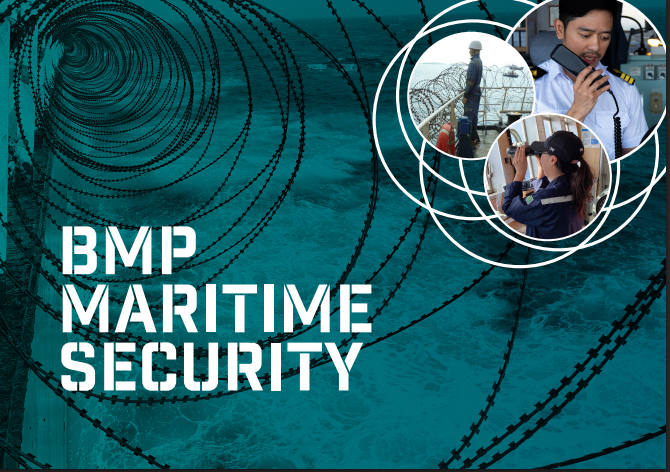Strengthening Maritime Security: Best Practices for the DCoC/JA Region
The Western Indian Ocean, the Gulf of Aden, and the Red Sea continue to face mounting threats to maritime security, affecting regional stability and global trade routes. Piracy, armed robbery, illicit trafficking, and maritime terrorism pose significant risks to both seafarers and commercial vessels navigating these high-risk waters.
Attacks on commercial shipping in the Red Sea between 2023-4 highlight the evolving nature of maritime threats, requiring adaptive and proactive security measures. Recognizing this fact, BIMCO, International Chamber of Shipping, IMCA (International Marine Contractors Association), INTERCARGO, INTERTANKO & OCIMF (Oil Companies International Marine Forum), supported by over forty maritime stakeholders, released the latest Industry Best Management Practices (BMP) – Maritime Security document (31 March 2025).

The key areas of alignment include:
- Reporting and information centres: The BMP emphasizes the need for real-time information sharing through regional centers such as the Regional Centre for Operational Coordination (RCOC) in Seychelles and the Regional Maritime Information Fusion Centre (RMIFC) in Madagascar. These centres were integrated into the DCoC Information Sharing Network to support cooperation and provide a baseline for collaboration with neighbouring countries as they have a written understanding with the Information Fusion Centre – Indian Ocean Region (IFC-IOR), EUNAVFOR and the UK National Maritime Information Centre (UK NMIC). Mirroring this aspect of the BMP, Article 11 on Coordination and Information Sharing and Article 12 on Incident Reporting in the DCoC Jeddah Amendment emphasize the critical role of regional cooperation in maritime security.
- Threat Mitigation Strategies: From assessing the threat to seafarers to implementing physical security measures and crew training, the BMP aligns with the Jeddah Amendment’s emphasis on preventive actions against piracy and other maritime crimes (Article 4 on Protection Measures for Ships)
- Collaboration & Coordination: The BMP highlights the important role of regional and international partnerships, reinforcing the DCoC/JA’s call for multi-stakeholder engagement between governments, the shipping industry, and security forces.
Similarities between the BMP and the DCoC Standard Operating Procedures (SOPs)
| BMP emphasizes continuous risk assessment, threat identification, and intelligence-sharing to improve situational awareness. | SOPs require states to actively engage in regional information sharing |
| BMP encourages vessels to report security incidents promptly to relevant maritime security centers | SOPs establish incident reporting protocols, ensuring vessels and states share maritime security threats with national and regional authorities |
| BMP outlines practical ship-hardening techniques such as barbed wire, secure access points, and evasive maneuvers. | SOPs promote proactive security measures onboard vessels, advising shipowners and operators to implement deterrent mechanisms. |
| BMP highlights cooperation with naval forces, regional authorities, and security agencies to mitigate threats at sea. | SOPs call for coordinated action among signatory states, including joint patrols, capacity-building exercises, and support for industry-led security efforts. |
| BMP aligns with broader IMO maritime security frameworks such as SOLAS Chapter XI-2 and ISPS Code. | SOPs incorporate international security conventions, requiring signatory states to comply with IMO regulations. |
A Call to Action
As signatory states and stakeholders continue to operationalize the DCoC/JA, adopting the Industry Best Management Practices (BMP) – Maritime Security will help vessels navigate high-risk waters safely while contributing to the broader regional security architecture.
For more details on the BMP, access the full document here and in the https://www.maritimeglobalsecurity.org/
Click here for more information on the DCoC Jeddah Amendment and here for the DCoC Standard Operating Procedures.
***************************************************

